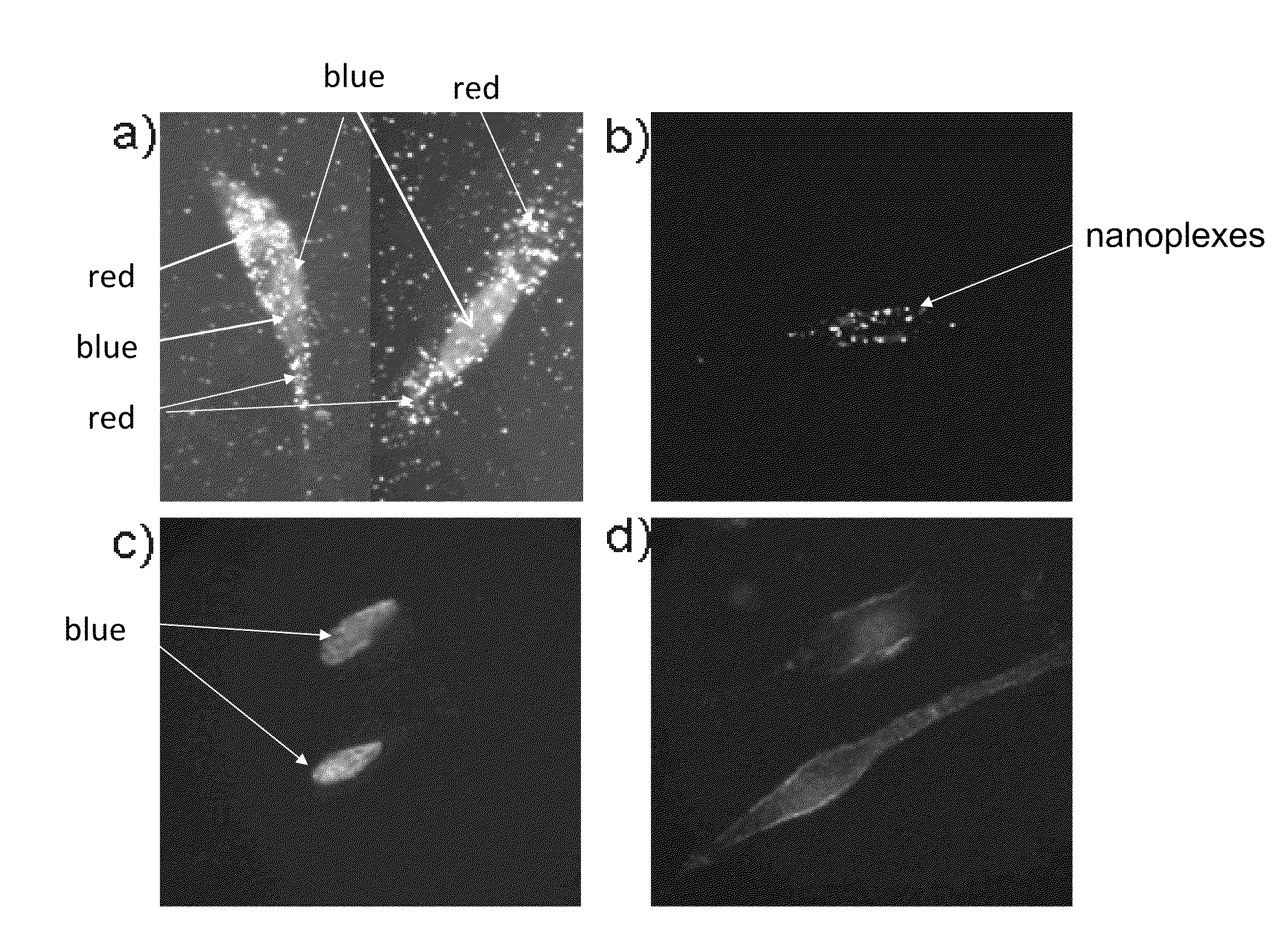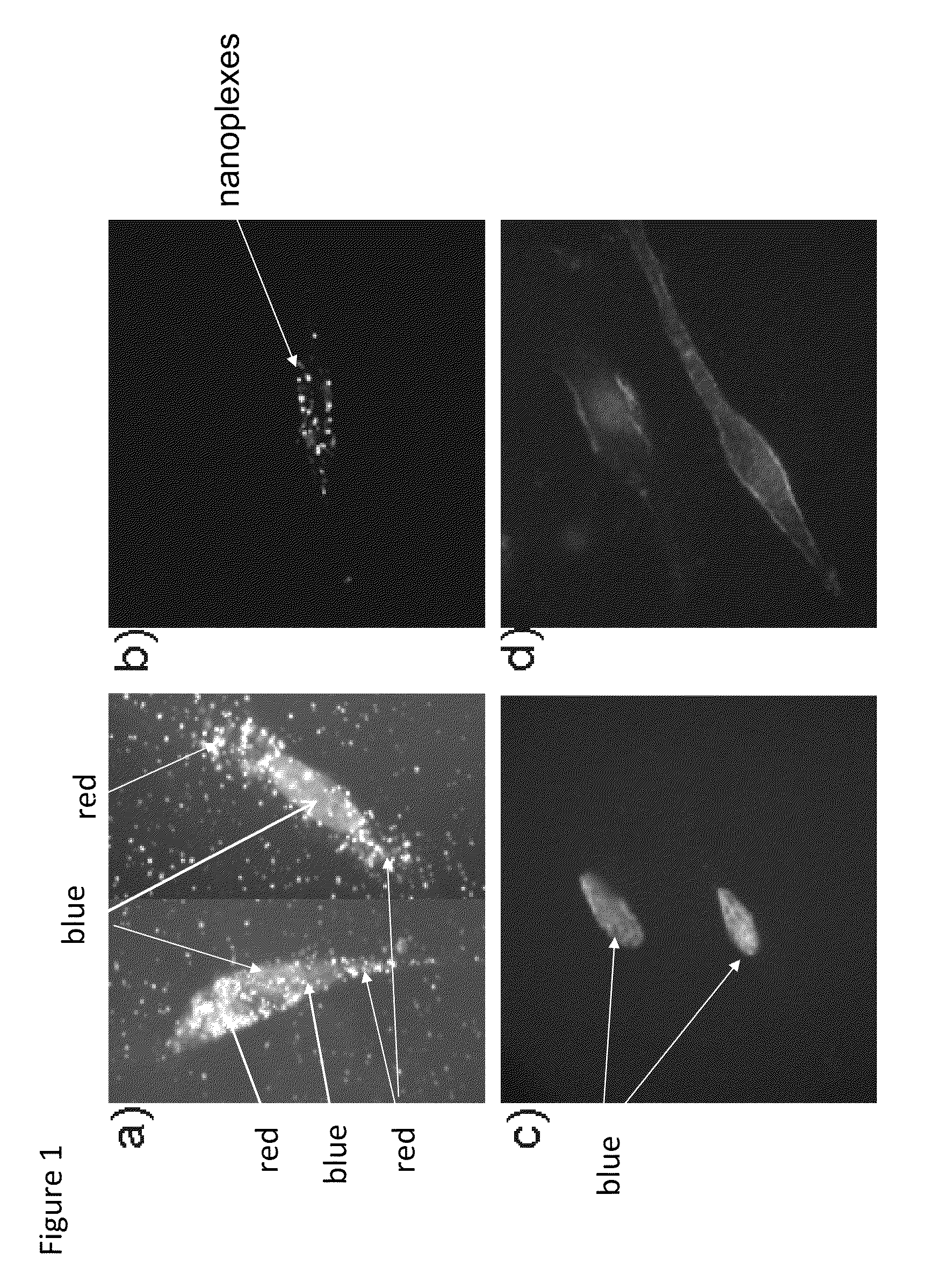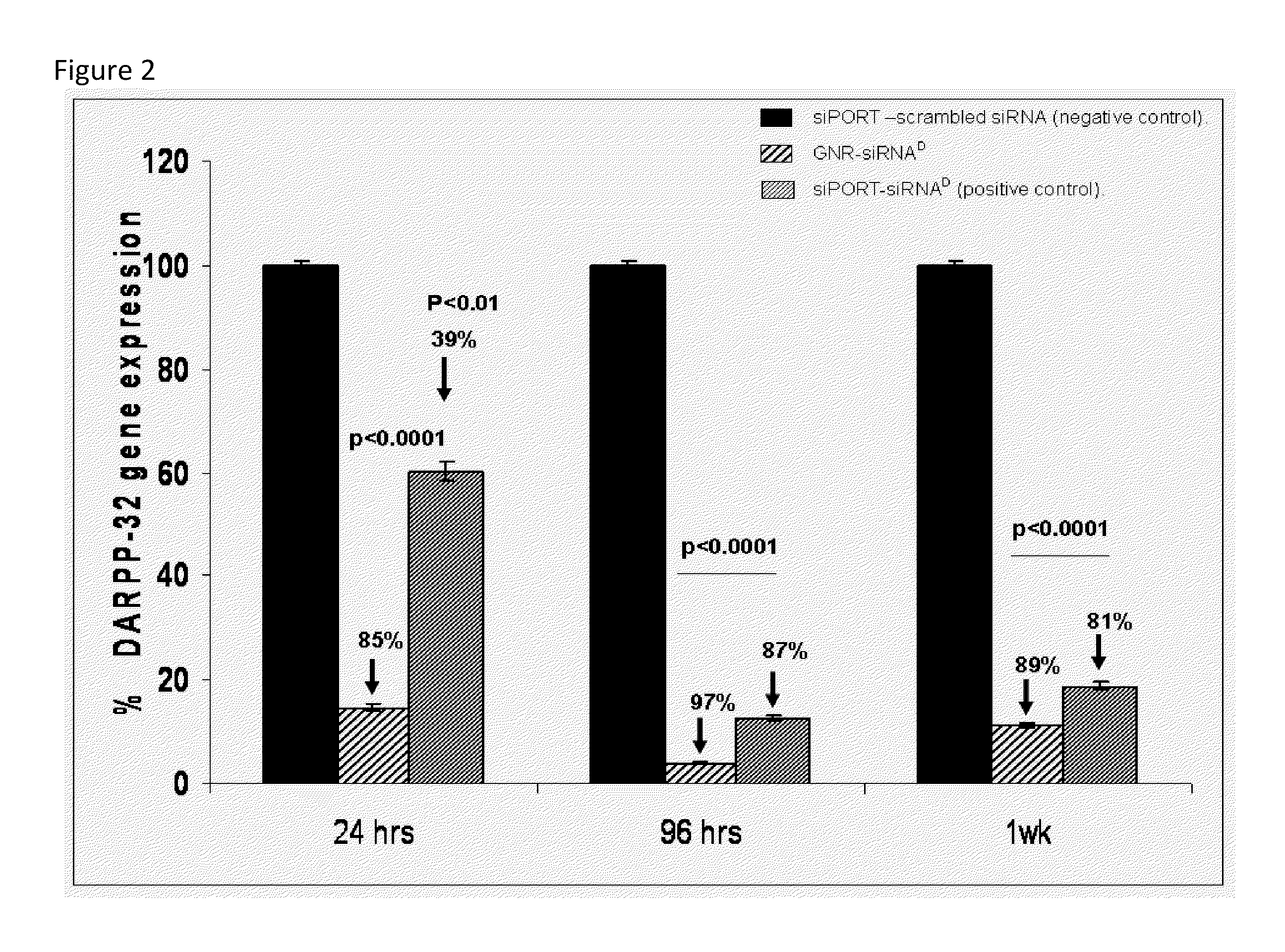GOLD NANOROD-siRNA COMPLEXES AND METHODS OF USING SAME
- Summary
- Abstract
- Description
- Claims
- Application Information
AI Technical Summary
Benefits of technology
Problems solved by technology
Method used
Image
Examples
example 1
[0055]This Example provides a description of the materials and methods used to obtain the data presented in the Examples 2-7.
[0056]Sequence of siRNA: The siRNA sequences for DARPP-32 (GenBank Accession No. AF464196; Jul. 23, 2002 entry, incorporated herein by reference) are: Sense—ACA CAC CAC CUU CGC UGA AAG CUG U (SEQ ID NO:1) Antisense—ACA GCU UUC AGC GAA GGU GGU GUG U (SEQ ID NO:2). The appropriate scrambled control siRNA sequences are, Sense—ACA CCC AUC CUC GGU AAG ACA CUG U (SEQ ID NO:3) and Antisense—ACA GUG UCU UAC CGA GGA UGG GUG U (SEQ ID NO:4).
[0057]Synthesis of the GNRs and GNR-siRNA nanoplexes: Cetyltrimethylammonium bromide (CTAB), hydrogen tetrachloroaurate(III) trihydrate (HAuCl4*3H2O), silver nitrate (AgNO3), L-ascorbic acid, glutaraldehyde(50% aqueous solution), and sodium borohydride were purchased from ALDRICH. All chemicals were used as received. HPLC-grade water was used in all the experiments. Stock solutions of sodium borohydride and L-ascorbic acid were fresh...
example 2
[0072]Electrostatic binding of siRNA with Gold nanorods to form nanoplexes:he cationic GNRs, prepared by growing multilayers of cationic polyelectrolytes upon cetyltrimethylammonium bromide (CTAB) coated GNRs, were electrostatically complexed to; (a) fluorescently labeled marker siRNA (siRNA-FAM; siRNAF) for studying their binding with nanoparticles and subsequent cellular uptake, and (b) functional siRNA specific for DARPP-32 (siRNAD). To examine the binding efficiency of the siRNA with the GNRs, we performed agarose gel electrophoresis. The results obtained for siRNA, both free and complexed with GNRs, are shown in FIGS. 8a and 8b. It is evident that siRNA complexed with nanoparticles (lanes 2, 3, and 4) does not have the same electrophoretic mobility as free siRNA (lane 1), and this restricted mobility is proportional to the amount of GNR complexed with siRNA. Also, we observed a partial quenching in the emission signal from both siRNAF (FIG. 8a) and ethidium bromide stained siRN...
example 3
[0074]Uptake of nanoplexes in neuronal cells in vitro, without any sign of cytotoxicity: The strong orange-red plasmonic scattering associated with GNRs can be utilized in studying cellular delivery using dark field microscopy. FIG. 1 shows the dark-field images of DAN cells, without (1c) and with (1a) treatment with the GNR-siRNAD nanoplex. The cellular uptake of the nanoplexes can be easily observed from the strong orange-red scattering of the nanoplex treated, as opposed to the untreated, DAN cells. This experiment highlights another advantage of using nanotechnology in the delivery of therapeutics, where in addition to the therapeutic efficacy, the unique properties of the GNRs can be used to determine their uptake in cells using dark-field imaging.
[0075]Confocal microscopy was also used in order to confirm the cellular entry of the nanoplexes in DAN cells, using GNR-siRNAF nanoplex. The confocal images of DAN cells treated with either siRNAF alone (FIG. 1d), or with GNR-siRNAF ...
PUM
| Property | Measurement | Unit |
|---|---|---|
| Length | aaaaa | aaaaa |
| Length | aaaaa | aaaaa |
| Diameter | aaaaa | aaaaa |
Abstract
Description
Claims
Application Information
 Login to View More
Login to View More - R&D
- Intellectual Property
- Life Sciences
- Materials
- Tech Scout
- Unparalleled Data Quality
- Higher Quality Content
- 60% Fewer Hallucinations
Browse by: Latest US Patents, China's latest patents, Technical Efficacy Thesaurus, Application Domain, Technology Topic, Popular Technical Reports.
© 2025 PatSnap. All rights reserved.Legal|Privacy policy|Modern Slavery Act Transparency Statement|Sitemap|About US| Contact US: help@patsnap.com



